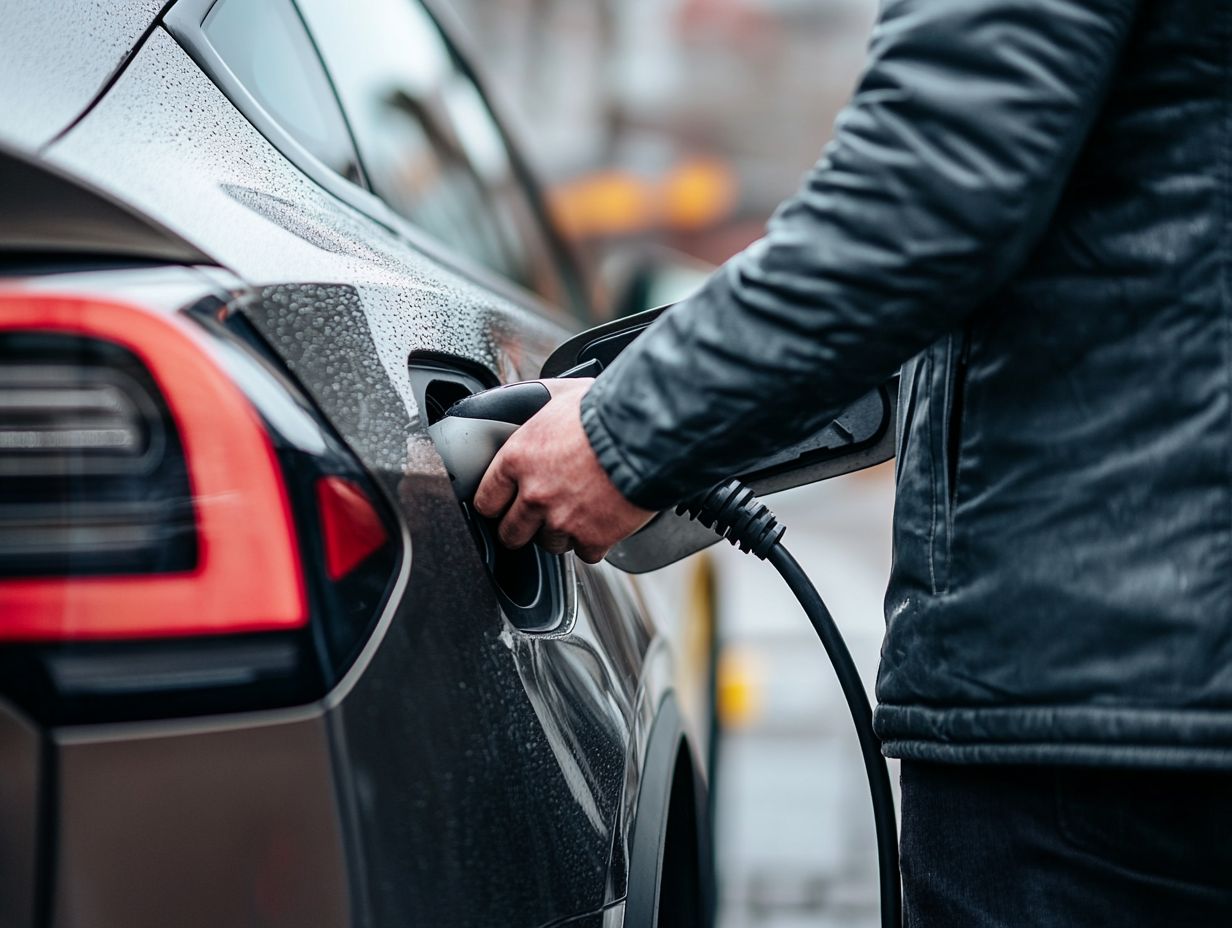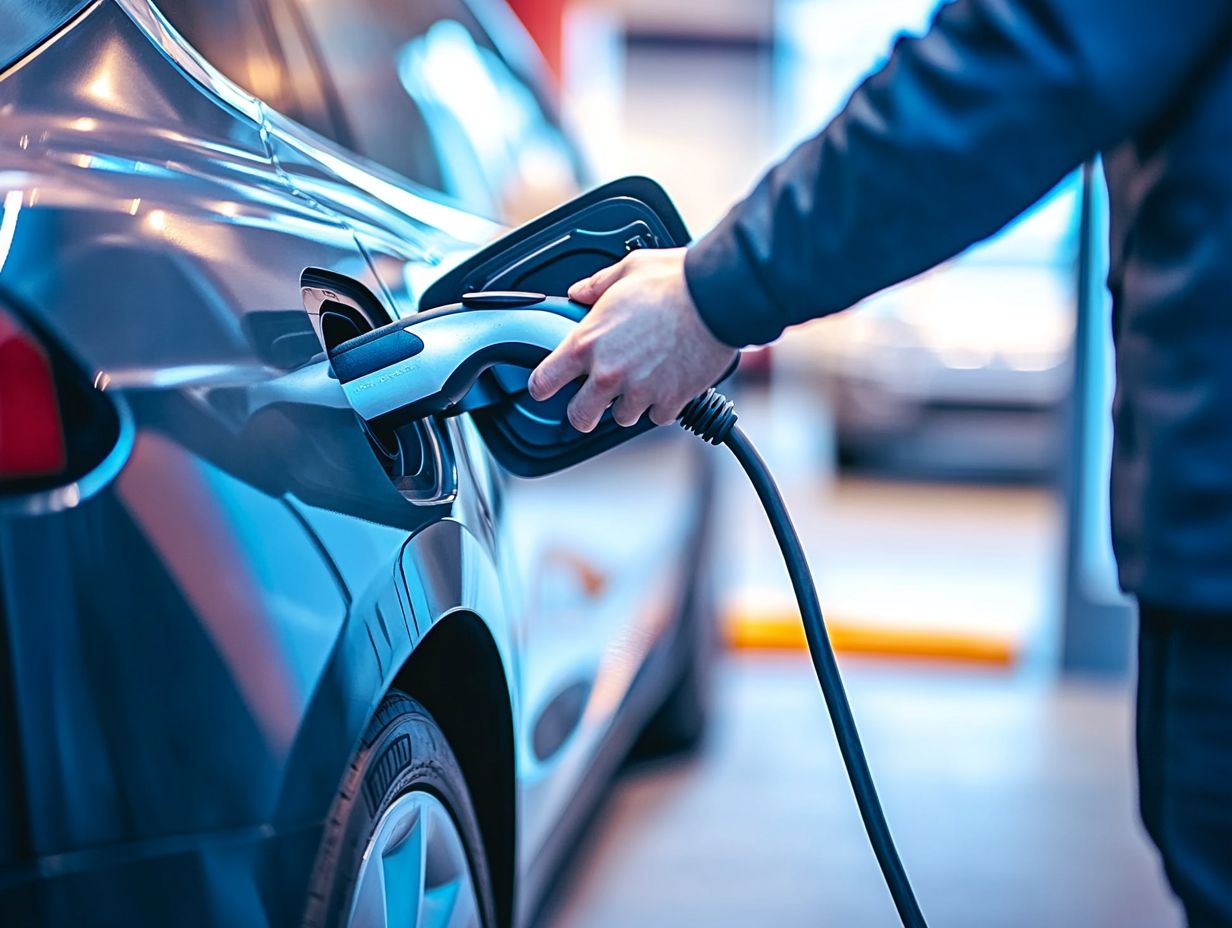How to Deal with EV Charging Cable Issues
Electric vehicle (EV) charging cables play a vital role in keeping your ride energized. However, they can present unique challenges.
From everyday wear and tear to pressing safety concerns, understanding how to troubleshoot and maintain your cables is essential for a smooth EV experience. This guide delves into common issues you might encounter, along with crucial maintenance tips and safety precautions.
You ll also find insights on repair options, theft prevention strategies, and alternative charging methods. This ensures you re thoroughly prepared to tackle any charging cable challenges that come your way.
Contents
- Key Takeaways:
- Common Issues with EV Charging Cables
- Troubleshooting and Maintenance
- Safety Precautions
- Replacing or Repairing a Charging Cable
- Dealing with Charging Cable Theft
- Alternative Charging Options
- Frequently Asked Questions
- How do I troubleshoot an EV charging cable?
- What should I do if my EV charging cable is not working?
- How do I maintain my EV charging cable?
- What should I do if my EV charging cable gets wet?
- Can I use an extension cord with my EV charging cable?
- How do I know if my EV charging cable needs to be replaced?
Key Takeaways:

- Regular maintenance prevents common EV charging cable issues.
- Follow safety precautions to avoid accidents.
- Take action in case of theft or damage to your charging equipment.
Common Issues with EV Charging Cables
EV charging cables are important for charging your electric vehicle (EV). However, they can present challenges that affect convenience and effectiveness.
Common issues can arise from a range of factors, including cable damage, compatibility issues, and the performance of charging stations. Recognizing these problems is crucial for ensuring that your EV charging experience remains seamless and efficient.
From slow charging rates to more serious concerns that might compromise the charging equipment, taking a proactive approach is key to navigating these challenges. Regular maintenance and troubleshooting can help preserve cable integrity and enhance overall functionality, ensuring that your charging experience is as smooth as possible.
Types of Problems and Causes
Understanding the various problems and their root causes related to EV charging cables is crucial for effective troubleshooting and maintenance.
One prevalent issue you might encounter is cable wear, often resulting from frequent bending or twisting. This can lead to internal damage that compromises efficiency. Software issues shouldn t be overlooked; outdated firmware can disrupt the charging process, hindering communication between your vehicle and the charging station.
Extreme temperatures whether sweltering heat or biting cold can dramatically impact charging performance, potentially reducing efficiency or even preventing charging altogether.
To maintain optimal functionality, conduct a thorough inspection of the cable, looking for visible signs of damage, fraying, or corrosion. Understanding how your vehicle’s software interacts with the charging equipment can help you tackle these common challenges effectively.
Troubleshooting and Maintenance
Troubleshooting and maintaining your EV charging cables are essential steps to ensure reliable performance and extend the lifespan of your charging equipment. By prioritizing these aspects, you enhance your overall EV charging experience and ensure that your investment continues to serve you well.
Steps to Address Common Problems
Using a step-by-step method to solve common issues with EV charging cables can improve your experience and extend the life of your equipment, as outlined in this guide on how to diagnose EV charging issues.
Begin by meticulously inspecting the cables for any visible signs of damage, such as fraying or cracks, since these problems can drastically hinder charging efficiency. Next, ensure that all connections are secure and free from corrosion, as these factors often compromise connectivity.
If the charging station is unresponsive, unplugging and re-plugging the unit can effectively reset the system. For persistent challenges like frequent disconnections or sluggish charging, consulting the user manual typically reveals troubleshooting steps specifically designed for your model.
If these measures fail to resolve the issue, don t hesitate to reach out to customer support; they can provide expert guidance tailored to your unique circumstances.
Safety Precautions

To keep your EV experience safe and enjoyable, follow these crucial safety precautions when handling charging cables! Implementing the right safety measures is essential for preventing accidents and ensuring secure operation at charging stations.
Prioritizing these precautions not only safeguards users but also enhances the overall experience at charging facilities.
How to Handle Cables Safely
Let s make sure you re safe while charging your EV! Follow these best practices to protect yourself and your equipment.
By dedicating just a little time to these practices, you can significantly extend the lifespan of your cables and elevate the overall efficiency of your charging system.
Proper storage is crucial. Gently coiling cables instead of yanking them helps prevent kinks. Securing them in a designated spot when not in use keeps things tidy.
Regular inspections allow you to catch any wear and tear early. Being mindful of how cables connect to devices can avert physical damage.
Simple actions like keeping cables away from sharp edges, utilizing cable organizers, and replacing frayed cords can lead to remarkable improvements in safety and performance.
Replacing or Repairing a Charging Cable
Deciding to replace or repair a charging cable can be challenging. Consider the cable s physical condition and costs before making a choice.
When to Replace or Repair
Recognizing the right moment to replace or repair a charging cable is essential for maintaining optimal battery care and ensuring that charging efficiency remains at its peak.
Keep an eye out for several telltale signs that signal the need for attention, such as visible frays or exposed wires. These not only compromise safety but also hinder performance.
If your vehicle starts experiencing inconsistent charging times or noticeably reduced charging speeds, consider these early warning signs of potential cable issues. Ignoring these indicators could lead to more significant performance drawbacks, ultimately impacting the battery’s longevity and efficiency.
By properly addressing these issues, you not only safeguard the vehicular electrical system but also enhance overall vehicle performance, allowing for smoother operation and greater reliability on the road.
Dealing with Charging Cable Theft
As the adoption of electric vehicles continues to surge, addressing the issue of charging cable theft becomes paramount. It requires a thoughtful combination of preventive measures and legal actions to effectively tackle this growing concern.
Preventive Measures and Legal Actions

Implementing effective preventive measures can significantly reduce your risk of charging cable theft. Understanding the legal recourse available can provide you with options should the unfortunate event occur.
To enhance your security, consider utilizing lockable charging stations or ways to keep cables organized that make it more difficult for thieves to access your equipment. Always keep a vigilant eye on your personal belongings in public spaces and opt for easily identifiable cables that stand out from the crowd.
If there is theft, it s crucial to report the incident promptly by contacting customer support for the device involved; they may offer tracking services or replacement options. Involving local authorities can increase your chances of recovering stolen property and help deter future criminal activity. Keeping a record of your charging cables’ serial numbers helps in recovery.
Alternative Charging Options
Exploring alternative charging options is essential for you as an electric vehicle (EV) owner, particularly when traditional home charging isn’t feasible or available.
Exploring Other Charging Methods
Are you ready to discover new ways to charge your electric vehicle? Alternative charging methods, like wireless charging and solar-powered chargers, give EV owners flexibility and convenience.
These innovative solutions not only meet your diverse needs but also help reduce the reliance on traditional charging stations. Wireless charging lets you power up your vehicle without cords, making it especially handy in busy urban areas. Meanwhile, solar-powered chargers harness sunlight to charge your car, promoting sustainability.
The growing use of these charging methods will improve the overall EV charging infrastructure, making it more accessible and efficient for everyone involved.
Frequently Asked Questions
-
How do I troubleshoot an EV charging cable?
To troubleshoot an EV charging cable, start by checking the cable and connectors for any visible damage. If you see any damage, do not use the cable and contact a professional for repairs or replacement. If there is no visible damage, try plugging the cable into a different outlet or charging station to see if the issue is with the power source. If the cable still does not work, it may need to be replaced.
-
What should I do if my EV charging cable is not working?
If your EV charging cable is not working, first check the power source to make sure it s functioning properly. If the power source is fine, try using a different cable to see if the issue lies with the original cable. If the second cable works, replace the original cable. If it doesn t work either, the issue may be with the charging station or your vehicle, and you should contact a professional for assistance.
-
How do I maintain my EV charging cable?
To maintain your EV charging cable, store it properly when not in use. Keep it in a clean, dry place, and avoid exposing it to extreme temperatures or sunlight. Regularly inspect the cable and connectors for signs of damage and replace it if necessary. Follow the manufacturer s recommendations for cleaning and maintenance to ensure safe and efficient use.
-
What should I do if my EV charging cable gets wet?
If your EV charging cable gets wet, unplug it from the power source immediately. Do not touch the wet cable or attempt to use it until it has completely dried. Once the cable is dry, inspect it for any signs of damage and test it with a different power source before using it again.
-
Can I use an extension cord with my EV charging cable?
No, it is not recommended to use an extension cord with an EV charging cable. Extension cords can cause voltage drops and increase the risk of overheating and damage to the cable. Use the designated charging cable for your vehicle to ensure safe and efficient charging.
-
How do I know if my EV charging cable needs to be replaced?
If your EV charging cable has visible damage such as cuts, cracks, or frayed wires, it should be replaced immediately. Other signs include overheating, slow charging, or an inability to hold a charge. Regular inspections and maintenance of your EV charging cable are crucial for safe and efficient charging.
For any further questions, don’t hesitate to reach out to a professional!






